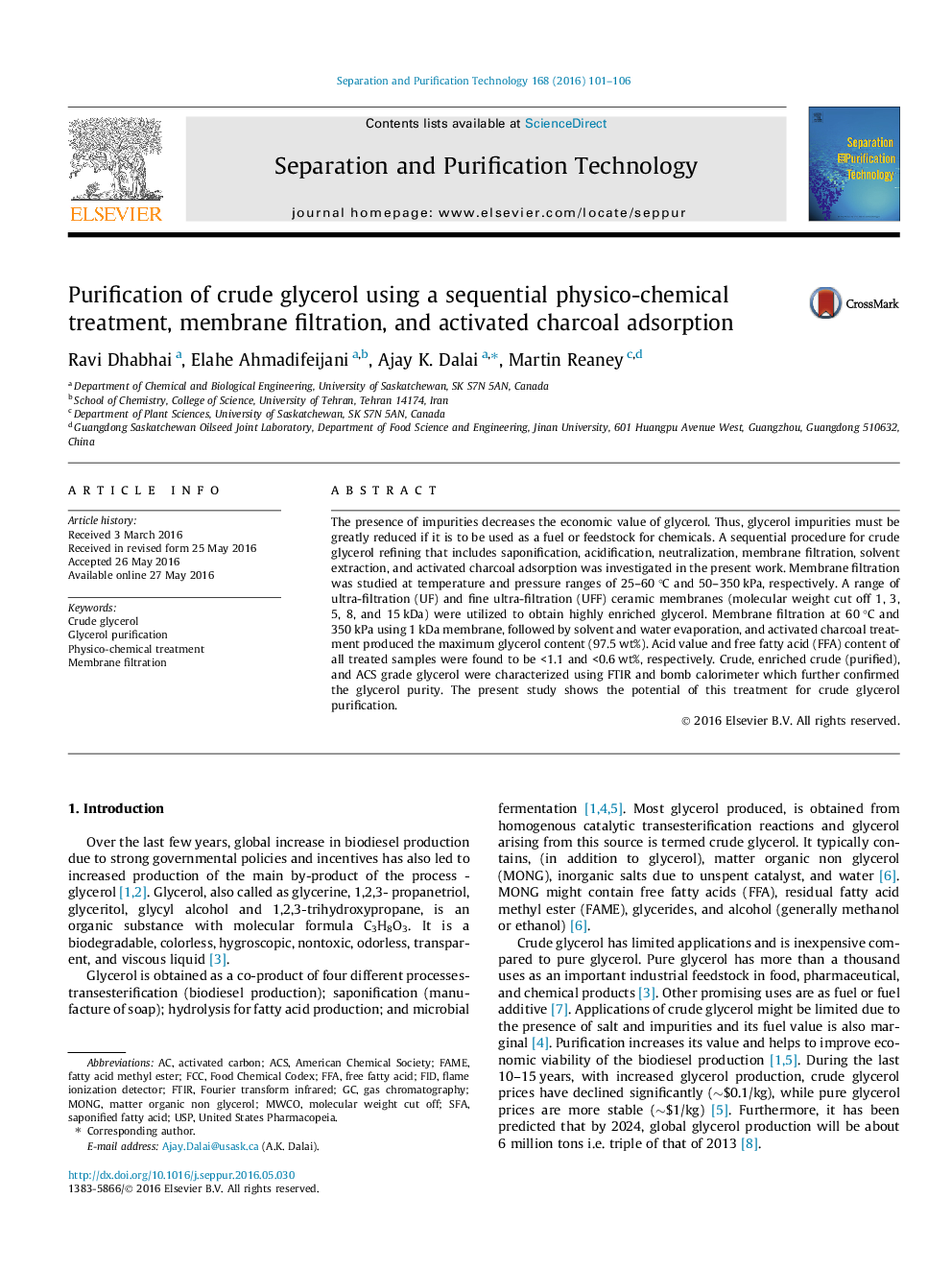| Article ID | Journal | Published Year | Pages | File Type |
|---|---|---|---|---|
| 640047 | Separation and Purification Technology | 2016 | 6 Pages |
Abstract
The presence of impurities decreases the economic value of glycerol. Thus, glycerol impurities must be greatly reduced if it is to be used as a fuel or feedstock for chemicals. A sequential procedure for crude glycerol refining that includes saponification, acidification, neutralization, membrane filtration, solvent extraction, and activated charcoal adsorption was investigated in the present work. Membrane filtration was studied at temperature and pressure ranges of 25-60 °C and 50-350 kPa, respectively. A range of ultra-filtration (UF) and fine ultra-filtration (UFF) ceramic membranes (molecular weight cut off 1, 3, 5, 8, and 15 kDa) were utilized to obtain highly enriched glycerol. Membrane filtration at 60 °C and 350 kPa using 1 kDa membrane, followed by solvent and water evaporation, and activated charcoal treatment produced the maximum glycerol content (97.5 wt%). Acid value and free fatty acid (FFA) content of all treated samples were found to be <1.1 and <0.6 wt%, respectively. Crude, enriched crude (purified), and ACS grade glycerol were characterized using FTIR and bomb calorimeter which further confirmed the glycerol purity. The present study shows the potential of this treatment for crude glycerol purification.
Keywords
Glycerol purificationFCCUSPSFAMWCOACSFFAflame ionization detectorFree fatty acidAmerican Chemical SocietyUnited States PharmacopeiaFourier transform infraredFIDPhysico-chemical treatmentFTIRMembrane filtrationFatty acid methyl esterFAME یا fatty acid methyl esters Molecular Weight Cut OffActivated carbonGas chromatographyCrude glycerol
Related Topics
Physical Sciences and Engineering
Chemical Engineering
Filtration and Separation
Authors
Ravi Dhabhai, Elahe Ahmadifeijani, Ajay K. Dalai, Martin Reaney,
